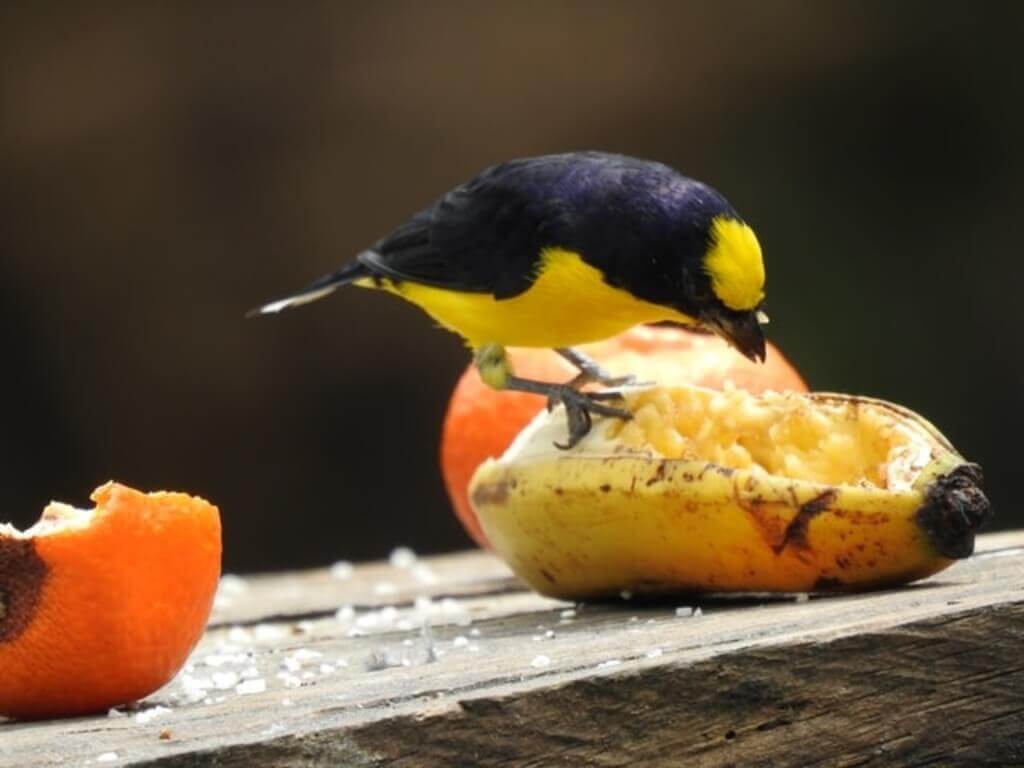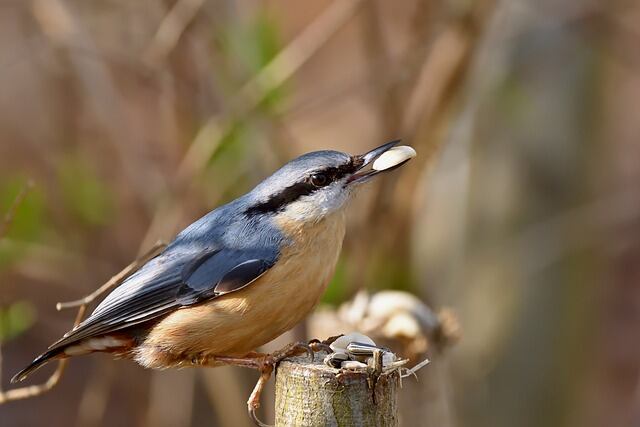As a bird enthusiast, I have always been fascinated by the unique sensory experiences of animals, particularly birds. One question that often arises is whether birds have taste buds and, if so, how they differ from those of humans.
Well, the answer is yes, birds do have taste buds, although their structure and function are somewhat different from ours. Avian taste receptors are located on the tongue, roof of the mouth, and back of the throat, and they can detect a wide range of taste sensations, from sweet and sour to salty and bitter.
The sense of taste in birds is an important tool for navigating their environment, guiding their food preferences, and helping them survive in the wild. In this article, we will explore the fascinating world of avian taste and examine how birds perceive taste and make food choices.
Table of Contents
- 1 Key Takeaways:
- 2 Do Birds Have Taste Buds?
- 3 Understanding Avian Taste Perception
- 4 The Role of Taste Bud Cells in Birds
- 5 Bird Food Preferences and Taste
- 6 Exploring Birds’ Sense of Taste in the Wild
- 7 An Insight into Birds and Tomatoes
- 8 The Science Behind Birds’ Attraction to Tomatoes
- 9 Other Foods Birds Enjoy
- 10 The Fascinating World of Avian Taste
- 11 Evolutionary Significance of Bird Taste Buds
- 12 Conclusion
- 13 FAQs
- 13.1 How do birds perceive taste?
- 13.2 What is the role of taste bud cells in birds?
- 13.3 How does taste influence bird food preferences?
- 13.4 How do birds use their sense of taste in the wild?
- 13.5 What kind of birds like to eat tomatoes?
- 13.6 Why are birds attracted to tomatoes?
- 13.7 What other foods do birds enjoy?
- 13.8 How does avian taste combine with other senses?
- 13.9 What is the evolutionary significance of bird taste buds?
- 14 Author
Key Takeaways:
- Birds have taste buds located on their tongue, roof of the mouth, and back of the throat.
- Avian taste receptors can detect a range of taste sensations, from sweet and sour to salty and bitter.
- The sense of taste in birds is essential for navigating the environment, guiding food preferences, and helping them survive in the wild.
- In this article, we will examine the structure and function of bird taste buds and explore how birds perceive taste and make food choices.
- We will also take a closer look at the food preferences of birds, including their attraction to tomatoes, and discuss the science behind their senses.
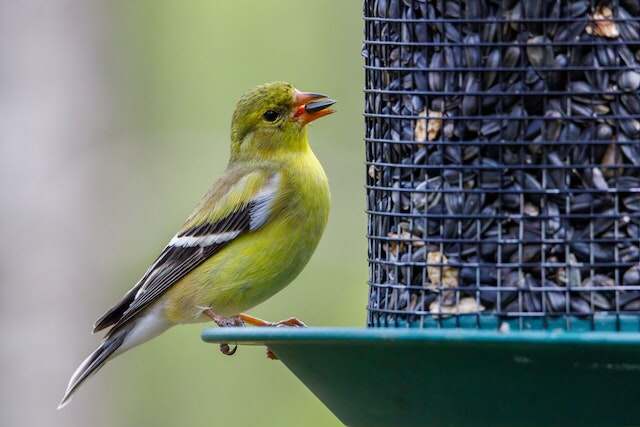
Do Birds Have Taste Buds?
Yes, birds do have taste buds, and the number of taste buds can vary among different bird species. Taste buds in birds play a role in detecting different flavors, which is important for their diet and foraging behaviors.
Here is a table showcasing the approximate taste bud counts in various bird species:
| Bird Species | Taste Bud Count |
|---|---|
| Chickens | 24 |
| Pigeons | 27 – 50 |
| Hummingbirds | 40 – 60 |
| Bullfinches | 46 |
| Great Horned Owls | 50 |
| Quails | 62 |
| Crows | 100 |
| Starlings | 200 |
| Vultures | 300 |
| Parrots | 300 – 400 |
| Ducks | 400 |
| Geese | 400 |
These numbers provide insights into the varying number of taste buds in different bird species, which influence their preferences for different tastes and flavors in their diets.
Understanding Avian Taste Perception
While birds do have taste buds, their gustatory system is not quite the same as humans. The avian taste perception is primarily based on the detection of bitter and sour flavors, with sweet and umami flavors being less prominent. This is due to the fact that birds have fewer taste buds than humans and their taste receptors are more sensitive to certain flavors.
The avian gustatory system relies heavily on the perception of bitterness as a warning mechanism against potential toxins in food. This is why some birds, such as finches and canaries, have a heightened sensitivity to bitter flavors and tend to avoid bitter-tasting foods.
However, taste is just one aspect of the bird sensory perception. Birds also rely on other senses, such as sight and smell, to identify food sources. For instance, some bird species are attracted to bright-colored fruits, which indicate the presence of ripe, nutrient-rich food.
The Avian Gustatory System
The avian gustatory system is comprised of taste buds located on the tongue, roof of the mouth, and throat. These taste buds contain specialized cells that respond to different taste stimuli, such as bitter, sour, sweet, and umami flavors.
Unlike humans, birds do not have a well-defined sense of taste in the beak. Instead, they rely on a cluster of nerve endings, called the Herbst corpuscles, to detect pressure and texture changes. This allows birds to differentiate between hard, soft, and crunchy foods.
The avian gustatory system is complex and plays a vital role in bird survival. By detecting bitter and sour flavors, birds can avoid consuming toxic substances that could harm them. At the same time, their sensitivity to certain flavors helps steer them towards nutrient-rich foods that support their growth and health.
Did you know? Certain species of birds, such as robins and blue jays, are known to enjoy eating tomatoes. They are attracted to the bright red color and the sweet, tangy flavor of ripe tomatoes.
The preference for tomatoes varies among bird species and can depend on factors such as geographical location and habitat. Research has shown that some birds, such as house sparrows, develop a taste for tomatoes when other food sources become scarce.
Overall, the avian gustatory system and taste perception are fascinating fields of study that shed light on the complex sensory experiences of birds. Understanding how birds perceive taste can help us appreciate their dietary preferences and the adaptations they have developed over time to survive in the natural world.
The Role of Taste Bud Cells in Birds
Unlike mammals, birds do not have as many taste buds. However, their taste buds are located in multiple areas in their mouths, including the base of the tongue, the larynx, and the roof of the mouth.
The structure of taste buds in birds is similar to that of mammals, as they consist of specialized cells that respond to different tastes. These taste bud cells in birds are responsible for detecting the basic tastes of sweet, sour, salty, and bitter.
Avian taste receptors are different from those of mammals, as they are more sensitive to bitterness and less sensitive to sweetness. This can be attributed to the evolutionary adaptation of birds, as many toxic substances in their natural environment tend to taste bitter.
Birds also have taste receptors called “umami” receptors, which detect the amino acid glutamate. This taste is associated with protein-rich foods, such as fruits and insects, that are important for bird growth and development.
The role of these taste bud cells in birds is to guide their food choices and preferences. Taste, along with other sensory cues such as sight and smell, helps birds determine what foods are suitable and safe to eat in the wild.
| Type of Taste | Location of Taste Buds | Function |
|---|---|---|
| Sweet | Base of tongue and roof of mouth | Detects sugar and carbohydrates |
| Salty | Base of tongue and larynx | Detects sodium |
| Sour | All over the mouth | Detects acidity |
| Bitter | All over the mouth | Detects toxins and alkaloids |
| Umami | Base of tongue, larynx, and roof of mouth | Detects protein and amino acids |
Overall, the taste bud cells in birds play a crucial role in their sense of taste and help them navigate their food preferences in the wild. Understanding avian taste receptors and perception can help us appreciate the unique sensory experiences of these remarkable creatures.
Bird Food Preferences and Taste
It’s no secret that birds have unique food preferences. While some species may prefer seeds and nuts, others may have a sweet tooth for fruits and nectar. But how do birds taste food, and what factors influence their food choices?
Firstly, the taste perception of birds differs from that of humans. While humans have taste buds on their tongues, birds have taste receptors located in the back of their throats. These receptors are specialized cells that detect different tastes, such as sweet, sour, bitter, and umami.
However, taste alone is not the only deciding factor for birds when it comes to food choices. Texture, scent, and even color can also play a significant role. For example, some bird species are attracted to bright red and orange fruits, as these colors indicate ripeness and nutritional value.
Furthermore, birds’ food preferences can be influenced by their natural habitat and feeding behaviors. For example, insect-eating birds may prefer food with a strong and pungent scent, as this helps them locate their prey in the wild.
What Kind of Birds Like To Eat Tomatoes?
Tomatoes are a favorite food among several bird species, including the American Robin, Cedar Waxwing, and Gray Catbird. These birds are attracted to the bright color and sweet taste of ripe tomatoes.
Interestingly, tomatoes are not only a tasty treat for birds, but they also provide several nutritional benefits. Tomatoes are rich in vitamins A and C, as well as lycopene, a powerful antioxidant that has been linked to reduce the risk of cancer and heart disease in humans.
However, it’s essential to note that not all bird species are attracted to tomatoes. Some birds may not enjoy the texture or taste, while others may have a different food preference altogether.
In general, birds have a diverse and intriguing food palate. By understanding their taste perception and food preferences, we can gain a deeper appreciation for these remarkable creatures and their unique dietary habits.
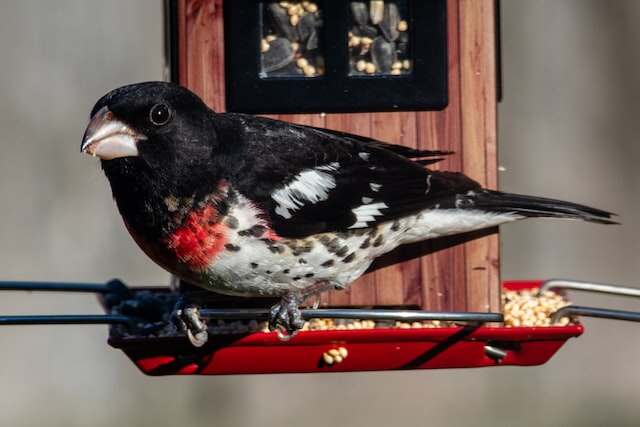
Exploring Birds’ Sense of Taste in the Wild
Birds’ sense of taste plays a critical role in helping them navigate the natural environment and find suitable food sources. Different bird species have different food preferences, but generally, they rely on their sense of taste to evaluate the quality and nutritional value of potential food sources.
Birds have a highly developed sense of taste, which allows them to detect subtle differences in flavor and texture. Their taste buds are located in the oropharyngeal region, which is located towards the back of their mouth. The taste buds are structurally different from those of mammals, with elongated cells that are tightly packed together. This structure allows birds to detect a wider range of taste sensations than mammals, including sweet, sour, bitter, and umami.
While birds’ taste perception is similar to that of humans in some regards, it differs in others. For example, birds lack the ability to detect the sweetness of certain sugars, such as sucrose. Instead, they are more sensitive to fructose, which is found in many fruits. Additionally, birds have a lower sensitivity to salt than humans, making them less likely to seek out salt-rich foods.
What Kind of Birds Like to Eat Tomatoes?
Tomatoes are a popular food source for many bird species, including robins, blue jays, and cedar waxwings. These birds are attracted to tomatoes because of their bright color, which signals that they are ripe and full of nutrients. Additionally, tomatoes have a slightly sweet taste that many birds find appealing.
Tomatoes also contain high levels of vitamin C, which is important for maintaining a healthy immune system. This makes them a valuable food source for birds, especially during the winter months when other food sources may be scarce.
It is worth noting, however, that not all birds are attracted to tomatoes. Some bird species, such as finches and sparrows, will rarely if ever consume them. This is likely due to differences in their taste preferences and nutritional requirements.
Overall, birds’ sense of taste is a crucial element of their survival and plays a significant role in their food preferences. By understanding how birds perceive taste, we can gain a better appreciation for these remarkable creatures and the unique sensory experiences they enjoy.
An Insight into Birds and Tomatoes
Tomatoes are a popular choice for human consumption, but did you know that some bird species enjoy them as well? The birds that are most likely to eat tomatoes are those that have a broad dietary range, such as robins, finches, and some species of sparrows.
While not all birds are attracted to tomatoes, those that are find them a nutritious and tasty addition to their diet. Tomatoes are rich in lycopene, which is an antioxidant that is beneficial for birds’ health.
However, it’s important to note that while tomatoes can be a healthy snack for birds, they should only be offered in moderation. Too many tomatoes can upset a bird’s digestive system and lead to health problems.
So, if you want to offer tomatoes to your feathered friends, be sure to do so in small quantities and as part of a well-balanced diet.
The Science Behind Birds’ Attraction to Tomatoes
Many bird species, such as robins and blue jays, are known for their love of tomatoes. But what is it about this fruit that makes it so appealing to them?
Birds are attracted to tomatoes because they are a rich source of nutrients, including vitamins A and C, as well as antioxidants. The bright red color of ripe tomatoes also catches the attention of birds, who are highly visual creatures.
Taste is also a significant factor in birds’ attraction to tomatoes. The sour and slightly sweet taste of tomatoes appeals to birds’ sense of taste, which differs from ours in several ways. For example, birds have more taste buds than humans, which enables them to detect more subtle flavors in food.
Interestingly, birds’ sense of taste is closely linked to their sense of smell. This is because birds use a combination of taste and smell to identify food sources and distinguish between different types of food.
Overall, the nutritional and taste benefits of tomatoes make them a popular food choice for birds in the wild. So, if you want to attract birds to your garden, consider planting some juicy tomatoes!
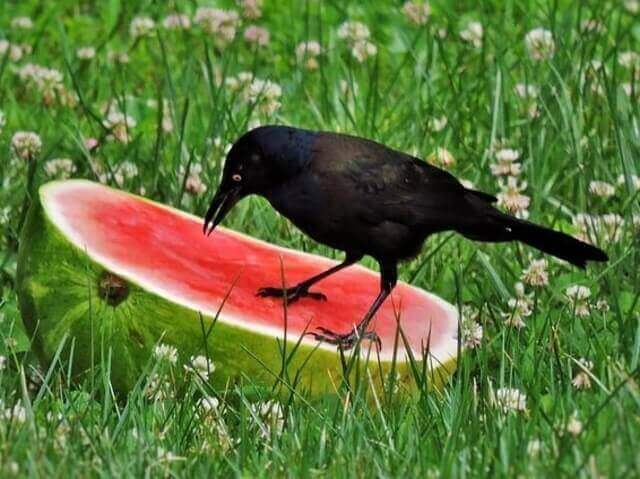
Other Foods Birds Enjoy
While some birds are attracted to tomatoes, others have different food preferences. Birds have diverse diets based on their natural habitat and the availability of food sources. Here are some examples of other foods that birds enjoy:
| Food Type | Examples of Birds That Like It |
|---|---|
| Seeds | Sparrows, finches, doves, pigeons |
| Fruits | Orioles, thrushes, waxwings, robins |
| Insects | Hummingbirds, warblers, swallows, flycatchers |
| Nectar | Hummingbirds, sunbirds, honeyeaters, lorikeets |
Birds have unique and varied taste preferences, just like humans. Some birds are drawn to sweet or fruity flavors, while others prefer savory or crunchy textures. Understanding these preferences can help attract certain bird species to your backyard feeders.
It is important to note that not all birds like the same foods, and some birds have specific dietary needs. For example, seed-eating birds require a diet high in protein and fat, while nectar-eating birds need a high sugar content in their food. Providing a diverse range of food sources can help attract a variety of birds to your backyard.
The Fascinating World of Avian Taste
As we have explored in previous sections, birds have a unique and complex sense of taste. But taste perception is just one aspect of their overall sensory experience of the world. Birds rely on their senses to navigate their surroundings, find food, and communicate with each other.
When it comes to food preferences, birds have a wide variety of tastes. From seeds to fruits and insects, birds have developed different strategies for finding the food they need to survive. Understanding how birds perceive taste can help us better comprehend their overall sensory perception and behavior in the wild.
Birds’ sense of taste is closely linked to their sense of smell. They use both senses in tandem to find food and detect potential dangers. For example, the smell of a ripe fruit can attract birds to a food source, while a strong odor may signal the presence of a predator.
Some bird species have a more refined sense of taste than others. For example, hummingbirds have a strong preference for nectar, which they detect with specialized taste receptors in their tongues. Other birds, such as birds of prey, have a less developed sense of taste because they rely more on their vision and other senses to hunt and find food.
Overall, the fascinating world of avian taste provides insight into the complex sensory perception of birds and their adaptation to different environments. Understanding how birds perceive taste can also help us make informed decisions about how to attract them to our gardens and feeders.
Evolutionary Significance of Bird Taste Buds
Avian taste buds have evolved over time to aid in the survival of different bird species. The structure of bird taste buds is similar to that of mammals, consisting of taste cells and supporting cells. However, the number and distribution of taste buds in birds vary depending on their dietary needs and feeding preferences.
For example, species that primarily consume nectar have taste buds that are more sensitive to sweetness, while those that consume insects have taste buds that are more sensitive to bitterness. This specialization of taste buds allows birds to detect and select food sources that meet their nutritional requirements.
Avian taste receptors also play a crucial role in the selection of food. Birds are able to detect chemical compounds in food that humans cannot perceive. For example, some species are attracted to specific volatile compounds in fruits, which indicate ripeness, while others are repelled by certain bitter compounds in plants that serve as a warning of toxicity.
The ability to detect these subtle differences in taste has been crucial for the survival and adaptation of birds to different environments. For example, species that have migrated to new regions have had to develop taste preferences for the local food sources to thrive in their new environment. This ability to adapt their taste preferences to different environments and food sources has also contributed to the diversification of bird species over time.
In conclusion, the structure and function of bird taste buds and taste receptors have evolved over time to aid in the survival and adaptation of bird species. Their ability to detect and select food sources based on taste has played a crucial role in their diversification and thriving in different environments.

Conclusion
In conclusion, exploring the world of avian taste has provided a fascinating glimpse into the sensory experiences of birds. We have discovered that birds do indeed have taste buds and taste receptors, and that these structures have evolved over time to provide adaptive advantages for survival.
Through our investigation, we have also learned about the wide variety of foods that birds enjoy, including tomatoes, which are particularly appealing to certain bird species. We have explored the science behind birds’ attraction to tomatoes and the nutritional and taste factors that make them desirable.
Understanding the sensory perception of birds is crucial for appreciating these remarkable creatures and their unique experiences of the world.
By delving into the intricacies of avian taste buds, we can deepen our knowledge of the natural world and gain a greater appreciation for the complexity of life on our planet.
So, whether you are a bird enthusiast or simply curious about the wonders of the animal kingdom, the study of avian taste is a fascinating and rewarding subject to explore.
FAQs
How do birds perceive taste?
Birds perceive taste through their gustatory system, which is different from ours. They use taste to guide their food preferences in the wild.
What is the role of taste bud cells in birds?
Taste bud cells in birds play a crucial role in their taste perception. Different types of avian taste receptors contribute to their overall sense of taste.
How does taste influence bird food preferences?
Taste plays a significant role in bird food preferences. Factors such as texture, flavor, and scent influence which foods birds prefer to consume.
How do birds use their sense of taste in the wild?
Birds use their sense of taste to navigate their natural environment and find suitable food sources. Their taste perception adapts to different ecosystems.
What kind of birds like to eat tomatoes?
Some bird species, such as robins and thrushes, are attracted to tomatoes as a food source.
Why are birds attracted to tomatoes?
Birds are attracted to tomatoes due to their taste and nutritional aspects. The specific flavor and composition make tomatoes desirable for certain bird species.
What other foods do birds enjoy?
Apart from tomatoes, birds enjoy a variety of foods such as seeds, fruits, insects, and nectar. Their taste preferences vary among different bird species.
How does avian taste combine with other senses?
Avian taste combines with other senses, including sight and smell, to create a holistic sensory experience of the world for birds.
What is the evolutionary significance of bird taste buds?
Bird taste buds have evolved over time to provide adaptive advantages for survival. The structure and function of avian taste buds have developed through evolution.

